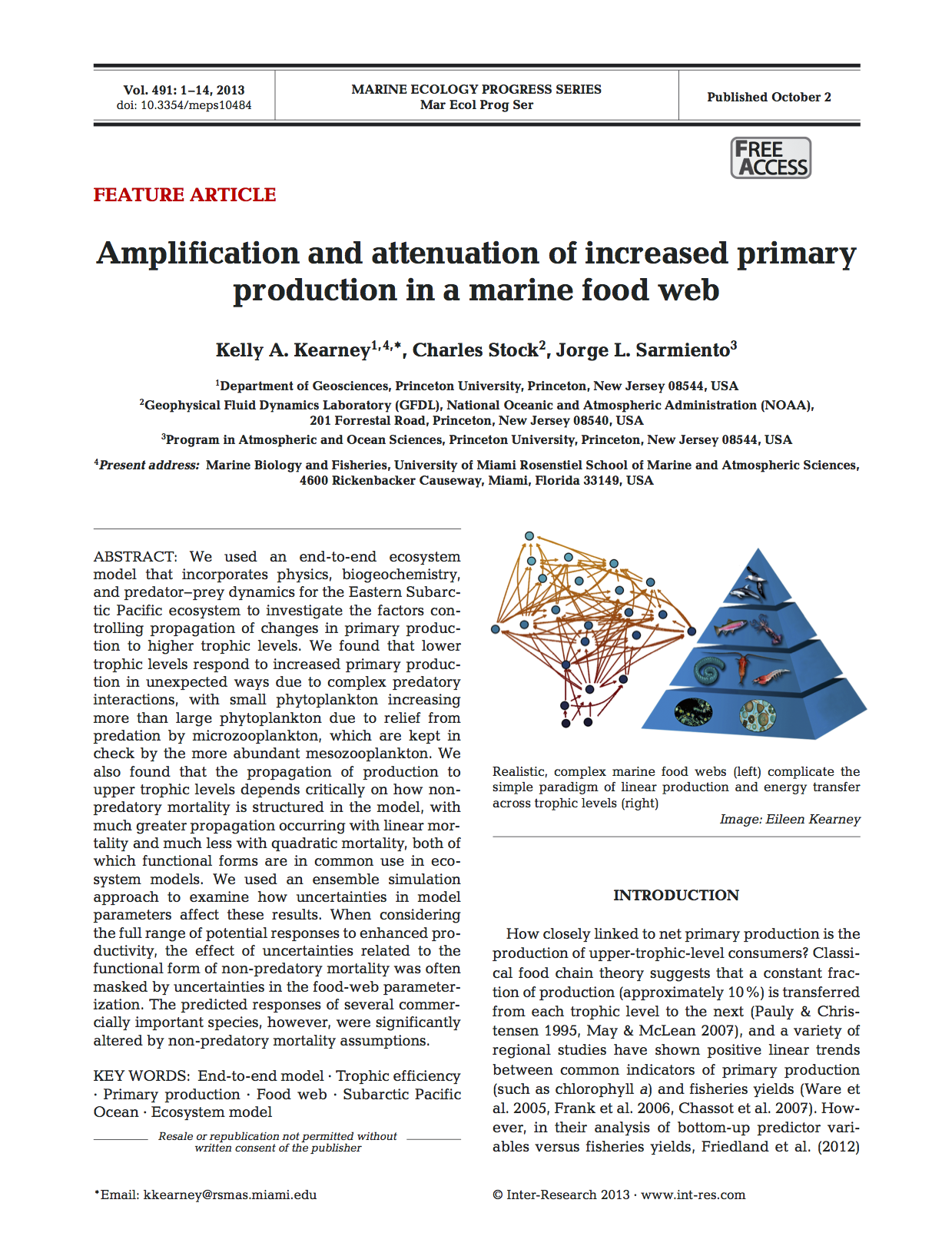Amplification and attenuation of increased primary production in a marine food web
Kearney, Kelly A and Stock, Charles and Sarmiento, Jorge L
We used an end-to-end ecosystem model that incorporates physics, biogeochemistry, and predator−prey dynamics for the Eastern Subarctic Pacific ecosystem to investigate the factors controlling propagation of changes in primary production to higher trophic levels. We found that lower trophic levels respond to increased primary production in unexpected ways due to complex predatory interactions, with small phytoplankton increasing more than large phytoplankton due to relief from predation by microzooplankton, which are kept in check by the more abundant mesozooplankton. We also found that the propagation of production to upper trophic levels depends critically on how non- predatory mortality is structured in the model, with much greater propagation occurring with linear mortality and much less with quadratic mortality, both of which functional forms are in common use in ecosystem models. We used an ensemble simulation approach to examine how uncertainties in model parameters affect these results. When considering the full range of potential responses to enhanced productivity, the effect of uncertainties related to the functional form of non-predatory mortality was often masked by uncertainties in the food-web parameter- ization. The predicted responses of several commercially important species, however, were significantly altered by non-predatory mortality assumptions.
